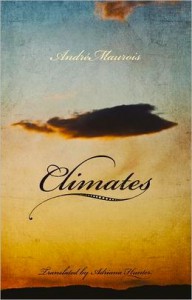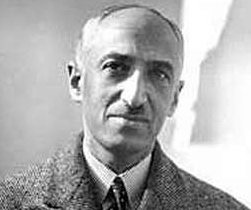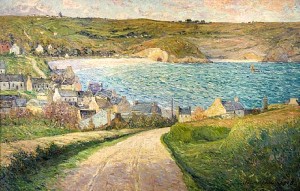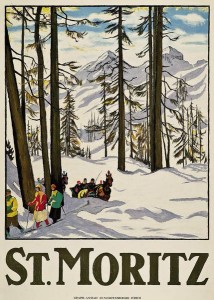“We love people because they secrete a mysterious essence, the one missing from our own formula to make us a stable chemical compound. I may not have known women more beautiful than Odile, but I knew plenty who were more brilliant, yet not one of them managed to bring the physical world within my grasp as she did.”
 If this quotation makes the speaker sound pompous and pretentious, it is because that main character, Philippe Marcenat, is writing a journal trying to explain to his second wife, Isabelle, his personally devastating past life with Odile, his first wife. He believes that if the quiet and accommodating Isabelle can only understand his life with the vivacious and exciting Odile, that Isabelle will be even more understanding of his often thoughtless behavior during their own marriage. Starting his journal in the years immediately following World War I, Philippe reflects the pomposity and vanity with which he, and others of his time and class often treat the women in their lives. “I wish I could tell you everything, Isabelle, from the sensitive little boy to the cynical adolescent, and on to the unhappy, wounded man. I wish I could tell you everything in complete innocence, exactitude, and humility.”
If this quotation makes the speaker sound pompous and pretentious, it is because that main character, Philippe Marcenat, is writing a journal trying to explain to his second wife, Isabelle, his personally devastating past life with Odile, his first wife. He believes that if the quiet and accommodating Isabelle can only understand his life with the vivacious and exciting Odile, that Isabelle will be even more understanding of his often thoughtless behavior during their own marriage. Starting his journal in the years immediately following World War I, Philippe reflects the pomposity and vanity with which he, and others of his time and class often treat the women in their lives. “I wish I could tell you everything, Isabelle, from the sensitive little boy to the cynical adolescent, and on to the unhappy, wounded man. I wish I could tell you everything in complete innocence, exactitude, and humility.”  Though he wants to be honest, Philippe is limited by his own attitudes and those of his culture, however. He is unable to identify with women in any meaningful way, except as property, and is at a loss to understand why the most beautiful woman he has ever met – his first wife, Odile – has abandoned him for another. “She had,” he explains to Isabelle, “what all the Marcenats lacked: a lust for life.” According to the author of the Introduction, Sarah Bakewell, the author uses his own life as a guide, both Odile and Isabelle being modeled on Maurois’s own wives. His first wife, Janine de Szymkiewicz, a beautiful young schoolgirl from an “unsuitable family,” swept him off his feet. Janine’s creative and imaginative responses to the “climates” around her, however, kept her husband entertained and fascinated until he had to leave to fight for his country in World War I. Both Janine and the author had affairs. His second wife, Simone de Caillavet, intelligent and devoted, though apparently plainer than Janine, spent many hours editing his writing over the course of forty years. His life with her was quieter than with Janine, though how much the author’s actual feelings may actually have resembled those of Philippe is an open question.
Though he wants to be honest, Philippe is limited by his own attitudes and those of his culture, however. He is unable to identify with women in any meaningful way, except as property, and is at a loss to understand why the most beautiful woman he has ever met – his first wife, Odile – has abandoned him for another. “She had,” he explains to Isabelle, “what all the Marcenats lacked: a lust for life.” According to the author of the Introduction, Sarah Bakewell, the author uses his own life as a guide, both Odile and Isabelle being modeled on Maurois’s own wives. His first wife, Janine de Szymkiewicz, a beautiful young schoolgirl from an “unsuitable family,” swept him off his feet. Janine’s creative and imaginative responses to the “climates” around her, however, kept her husband entertained and fascinated until he had to leave to fight for his country in World War I. Both Janine and the author had affairs. His second wife, Simone de Caillavet, intelligent and devoted, though apparently plainer than Janine, spent many hours editing his writing over the course of forty years. His life with her was quieter than with Janine, though how much the author’s actual feelings may actually have resembled those of Philippe is an open question.

Remains of the actual Chateau de Gandumas, where Philippe’s family lived
In the novel, published in 1928, Philippe is the son of a successful businessman with a small chateau in Gandumas and a paper factory located nearby in the countryside near Limosin. His interests in music and art make him respond immediately to the creativity of Odile, whom he meets in Florence, but she, unlike him, is someone who expresses her feelings publicly, a woman “not like us,” his very proper aunt points out. After their marriage Philippe wants her all to himself, quickly growing jealous of her friendships with both men and women. He becomes demanding, wanting to know where Odile is at all times, but she refuses to succumb to his overbearing demands. Eventually, she finds someone else who allows her to be her impulsive and spontaneous self. As the marriage deteriorates, he confesses, “I loathed her and adored her. I thought her innocent and guilty.” She, in turn, blames him for putting her on a pedestal. “You ask too much of women. You expect too much…An evening with you is like a torture session now…If I stay here, I’ll lose my mind.”

The Beach at Morgat, Brittany, where a crisis evolves for Philippe and Odile. Painting by Maxime Maufra, ca. 1900.
Isabelle’s story begins halfway through the novel. Years have passed since their marriage after World War I, and Philippe has just died. It is at this point that Isabelle begins her own journal. “For my own sake, I would like to make a record of my love as you did of yours….[though] we are always tempted to sentimentalize ourselves and depict ourselves as we would like to be. Particularly me; it is one of the things you held against me.” As Isabelle reveals their post-war courtship and marriage from her own point of view, the true nature of the marriage and the respective limitations of the two characters become even clearer. “What I want from love,” Isabelle remarks “is a warm, caressing climate, something my family refused me.”

St. Moritz, where Isabelle discovers just where she stands with Philippe in their marriage. Poster from 1918.
Philippe’s posturing and his philosophical analyses throughout the novel reflect the moods (climates) of the day, and as he examines his ideas of love, he wonders why, “between man and woman, it is often a naïve, almost stupid, utterance from the woman that makes the invincible man want to kiss that childish mouth, whereas for the woman it is often when the man is at his most serious and most uncompromisingly logical that she in turn loves him best?” The over-simplification of issues and the demeaning attitudes Philippe expresses will not endear him to female readers, though Isabelle apparently finds them helpful in understanding her own life with him and in excusing behavior inimical to most women in the present day. His constant womanizing and his genuine, long-lasting love for several other women at the same time that he lives with his wife are behaviors Isabelle accepts: “If we truly love,” she notes in her journal, “we mustn’t attach too much importance to the things that people we love do. We need them; they alone mean we can live in a particular ‘atmosphere’ [or climate] that we can’t get by without. So long as we can keep them, hold on to them…what does the rest matter?” The novel, aided by the new translation by Adriana Hunter, moves swiftly and smoothly through time, revealing much about the culture of France between the two wars. The author has been assiduous in analyzing the nature of love, and few aspects of love are omitted. The two main characters, Philippe and Isabelle, do spend time making often ponderous statements, however, the author preferring to state, rather than to illustrate new insights through the action of the novel. The palpable presence of three authors – Andre Maurois, Philippe, and Isabelle – all of them trying to control the attitudes of the reader – keep that reader at a distance, and though readers may see themselves in some aspects of some characters, they may not respond to them with powerful feelings. The novel is a product of its time, and if regarded in that sense, it provides memorable insights into life between the wars.
Photos, in order: The author’s photo appears on http://www.grandesmensagens.com
The Chateau de Gandumas may be seen here: http://lanouaille.blogs.sudouest.fr
The Beach at Morgat, where Philippe comes to new understandings of Odile, is by Maxime Maufra, ca. 1900. http://www.wikipaintings.org
The poster of St. Moritz, from 1918, may be found here: http://www.departures-international.com
ARC: Other Press
